Special Thanks to Detailing World Prosper for sponsoring this feature, to Austin Bengston for his outstanding photo coverage, and to Marc for sharing not only his Mustang but the stories that bring it to life.
We first spotted this Mustang at a car meet hosted by Detailing World in Prosper, TX. Surrounded by some impressive rides, this '66 Mustang still managed to stand out. There was just something about it, and we had this burning question.
How does a Mustang go from this...

...to this?

Let us introduce you to Marc. From the moment we met him, it was clear he isn’t just another car enthusiast—he’s a seasoned pro. Behind his kindness, sharp wit, and riotous humor lies a tactical and ingenious builder. His journey into car building started in high school, where he first learned to craft cars and machine parts, laying the foundation for his future career.
It all began when Marc took a job with a man who ran a machine shop out of a DISD temporary classroom building in his backyard. While working on vacuum plating systems for semiconductors (boring!) and many R&D projects for Texas Instruments they stayed awake by building a '68 Mustang SCCA road race car. Incredibly, they completed the build in just three weeks, and the car went on to race successfully for the entire seven years Marc was there.

The '68 Mustang was owned and driven by Rick Cardenas who is still operating BLAK Racing Enterprises to this day located in Garland TX.

After they expanded and moved to a proper machine shop in late 1980, Marc continued to be involved in racing, albeit more on the support side, handling pitting and transport.
Marc was first exposed to this style of racing watching the Trans-Am Series Races at Green Valley Raceway in the late 60's. Green Valley is a permanent road course stretching over 1.6 miles located in North Richland Hills, TX. In '66 the original course was changed to a 2.1 mi layout. The road course was used for Trans-Am series races, SCCA races and held a Can-Am race in '84. The drag strip (start-finish straight) was also used for NHRA and AHRA sanctioned events. [Green Valley Raceway]
Fast forward to 2022, and Marc has essentially built a Trans-Am race car, upgrading the entire drivetrain and suspension with modern powertrain and electronics. This Mustang is an analog-digital clone of that same race car from nearly 40 years ago—a low-budget, reliable, fun, and safe race car for the street.
Today Marc has 25 years of experience in machine shops. His resume includes 15 years spent designing and fabricating corporate jet interior cabinetry and C-130 military hospital aircrafts, and several years in the semiconductor industry working on high-vacuum plating and coating systems. His precision and advanced skill set was honed when working on aircraft where there is no margin for error. This professional experience transferred seamlessly to building a car. This allowed him to craft a race car with standards on par with military-grade fabrication.
Marc has also shown that you don’t need an enormous budget or the latest technology to build a race car—you just need to measure twice and have a friend like Pete, who has nothing but time and a huge barn with a lift. Pete deserves his own introduction, so we’ll save that for later. Trust us, it’ll be worth the wait.



Our day began early, with the roar of Marc’s Mustang audible from a block away. Austin (@austinbengstonphotography) arrived shortly after in his red C5 Corvette, our chase car for the day. Austin is responsible for the shots that accompany this feature—he’s the man, so be sure to check out his page.
We tore down the highway, zipped through backroads, and made our way to Pete’s house, stopping only to say hello to the Lucas Fire Department and make some noise in the trees. The cars were flying, and we made it back just as the heat set in. We left Marc, Pete, and Austin with gift buckets full of professional detailing necessities from Detailing World Prosper. As our sponsor, they couldn’t have been more fitting. In fact, none of this would have been possible without meeting Marc at their car meet. We’re incredibly grateful for the community they’re building.

Buckle up, this build breakdown will take you through nearly every single detail of the car that was built over a 14 month period. If you have any comments about the build or want to learn more please reach out to us via email (info@jandroby.com)!

The car rolled into the shop just like this on April 15th of 2021. (Marc's advice: Never buy a car at night, in the rain, without a flashlight) It was time to get to business as the previous owners handy work needed to be removed. Marc would be (at least) the 3rd brave owner of this project.
The first parts order was for the roll cage while waiting for the title. When picking up the cage and window shopping the clearance section at Summit Racing a current build Ford Racing BOSS 302 Crate Motor found its way into the shopping cart.


Throughout this project it was important to Marc to only buy parts from vendors that you can get ahold of on the phone. This is an important lesson in Hot Rodding where a great deal of knowledge be shared and time saved with a quick phone call. Rod and Custom Motorsports supplied the entire suspension and brake set up.
Roger Sarvis from Rod and Custom Motorsports sent a custom package and kit that fit as it was supposed to including a rack and pinion steering and linkage plus a Ford 9 in. rear end from John's Industries.
While waiting on these components the damage from previous owners was repaired and the 8 point roll cage was installed. The cage extends from the rear trunk to the front lower subframe.


These drawings were made before the car was even purchased. Marc had a strong vision for the build inspired by Trans-Am nostalgia.



The interior work included rust removal and creating new close out panels prior to fitting the roll cage.




Rear structure and roll cage install.




Front dash was gutted to the firewall plus reinforcement was added to windscreen support.



Temporary seat install and started laying out the dashboard design.







Final dashboard and gauge cluster design made with adjustable clamps to dial in gauge visibility.



Custom wiring harness and gauges tested.





Mounting the 3 master cylinders for the brake system. The "Holy shit how do I make this work" look.

All side widows and side vent windows were removed saving over 200 lbs. New door handles installed.

MSD ignition controller.



In November components arrived and it was time to assemble the rear suspension.



12.88" Rear Willwood brakes with drilled and slotted rotors installed including internal emergency brake shoes.


Removed shock towers then repaired and reinforced subframe.


Inner fender wells forward of the shock tower were missing so they needed to be rebuilt.





December rolls around and more components arrived. Mustang II style front end arrived along with front Willwood brake system. The "Holy shit how does this go together" look returned.




Front suspension completed and roll cage attached to front subframe install. The roll cage was installed inside the fender wells as opposed to in the engine compartment for a cleaner look and function.
To note, once all the suspension was installed, every single component from Rod and Custom was delivered. The only missing parts were two cotter pins that Marc says wandered off.
Now, in January of 2022 its time to fit the engine.



Fitting correct headers required modification to the steering shaft



Fuel injection and gas peddle linkage install. Tremec T5 transmission mounts were also fabricated at this time. Measurements were taken for fabricating the driveshaft.



Fabrication started on exhaust system and 3 section diverter tip.



Fabricated alternator mounts and cold beer.


Kill switches and power ports.



More exhaust work installing Flow Master Super 10. Currently superseded by a SpinTech 3000.




Engine fit, fuel filter/lines and wiring.




Final brake system install & brake light switch.




Insulated aluminum diamond floor plate anodized after fit.
Anodized Plating was done at Texas Precision Plating - Thanks to Doug, Steve, Homar & Rocio!


Front air damn design & mock up.



Interior paint.







Fender clearances dialed in & flares designed and fit. Note how thick the body filler is on the quarter panels from previous owners!


Inner rear aluminum close out panels prepped for final install.



Cleaned trunk, modified inner fenders for clearancing. Painted and installed trunk drop pan.


Installed fuel cell.





Fabricated flare extensions from flare to rocker area and welded them on.




Pulled engine to install hydraulic bearing assembly & clutch. Made spacers missing from kit.




Cleaned, painted and prepped engine compartment for final engine install.



Installed the shift lever we fabricated from a clutch pedal that was in a box of parts.




Installed engine and high temp ceramic painted exhaust. Test fired the engine and drove the car around the block ONE DAY SHY OF ONE YEAR from dragging the car out of a backyard!




Fenders reworked and shaped to clear both rear tire sizes to be used.


Installed engine management and accessory mounts to roll cage.


Measured gills for LED turn signals and running lights.




Final design for front spoiler & started to fabricate mounts for main supports.





Designed and fabricated mounts for Saginaw Power Steering unit.




Picked up the .090 aluminum air dam from Garland Sheet metal that they cut and bent per my drawings. Fabricated a 2x2 top rail support to fit the dam.



Fabricating the entire air dam structure and supports



Added air intake cutouts and anodized the sheet metal air dam


Added lower lip to air dam


Installed and modified hood pins. Installed rock screen to radiator support.


Fit and drilled hood scoop.



First drive with interior and air dam installed.


Undercarriage shots.




Headlights, turn signals, reverse lights installed & tested.





Designed, layout and cut rear deck spoiler. Installed hinges and turnbuckles.



Final trim and anodized rear deck spoiler.



Not that you need to look behind you when driving this car but side view mirrors are important for registration purposes.


Weld in body to roll cage support plates.




The car is now called Jake and is ready for true test drives and its FIRST car meet.




Front and rear window hold down clips and straps were made. The original glass was used on both the front and rear windows.
90% of the fasteners are installed into rivnuts. The hardware is MS Grade aircraft hardware. In order to compete on road courses most sanctioning bodies require window clips. These are slightly exaggerated however most race cars don't have side windows so it would be possible for a window to blow out at speed..


Design and install nitrogen door with hold open/stop gas struts.


Fabricated door handle blank off plates and riveted to door.


Installed roof insulation and roll bar padding.


Finished interior install and painted inner doors, added felt lining in doors for sound deadening. (Lol as if!)






Started body work to blend flares to body. Used glass filled bondo to fill gaps and help stabilize flair to body. Then used regular bondo filler.



The results after days of sanding.






Prepped body for paint one panel at a time. Pre-painted the window gap area that will have the anodized black closeout strips riveted on. Then they will be masked off for final paint.



Photoshoot with bae.


Painted front headlight buckets and gills.






Rear rust removal, primer and paint.



Removed trunk lid, hood and rear corner castings. Prepped and painted.



Marc's wife had one stipulation. The car must be painted before he could park it in the garage. So, they rolled the car out, shot the infamous rust-oleum turbo paint on and pulled the paper off in just 25 minutes. (9 cans total = $157)


LED Headlights



Painted rear light panel black, installed trunk lid and tail lights. Mounted rear spoiler.


Officially a BOSS 302



Designed, fabricated and painted radiator trim closeout.


Added charging port where OEM gas cap was located. (Not a hybrid)




Installed UTV windshield wiper assembly.





Original e-brake system was trash, bought a '93 e-brake assembly on e-bay and modified the cable system. Fabricated a black anodized close out box.





Added front brake cooling. Bought the bezels and skeet hose from a local aircraft parts supply company, Aircraft Spruce. Routed holes and installed the bezels.







Designed and fabricated removable side windows with sliding vent windows.


Added small squirrel cage fan that directs air on driver or rotates to defrost windshield.



After driving in hot/cold weather the drivers legs and cabin got very hot/cold especially with the side windows installed. Marc added a series of dimpled holes with Willkie screens for air flow. To control air flow the vents can be taped to create perfect air flow.


Had the roof graphic designed and installed at Signarama in Allen, TX.
From Marc:
You just experienced 14 months of hell, fun, learning, crying and cussing.
In memory of Jake. Jake is a reference to Marc's dad who always enjoyed cars. Today, the Mustang is adorned with "Jake 2.0" on the rear spoiler.




From left to right: Durango train, the sign said keep head, arm, and body inside at all times. Stearman ride for his 80th birthday present. Dressed in his Army blues for a veterans dinner in the 90s. Last picture was in a 2009 motorcycle gathering in Pigeon Forge.
--------
After putting this post together, it became clear why Marc can drive like a bat out of hell. When you build every square inch of a car, you forge a unique connection with the machine—something almost metaphysical, perhaps even spiritual. Whether or not you believe in such things, the bond between man and machine is undeniable. If you’re not moved by the roar of an engine and the smell of gasoline, you probably drive a Tesla.
Honor tradition. Build a damn Hot Rod.

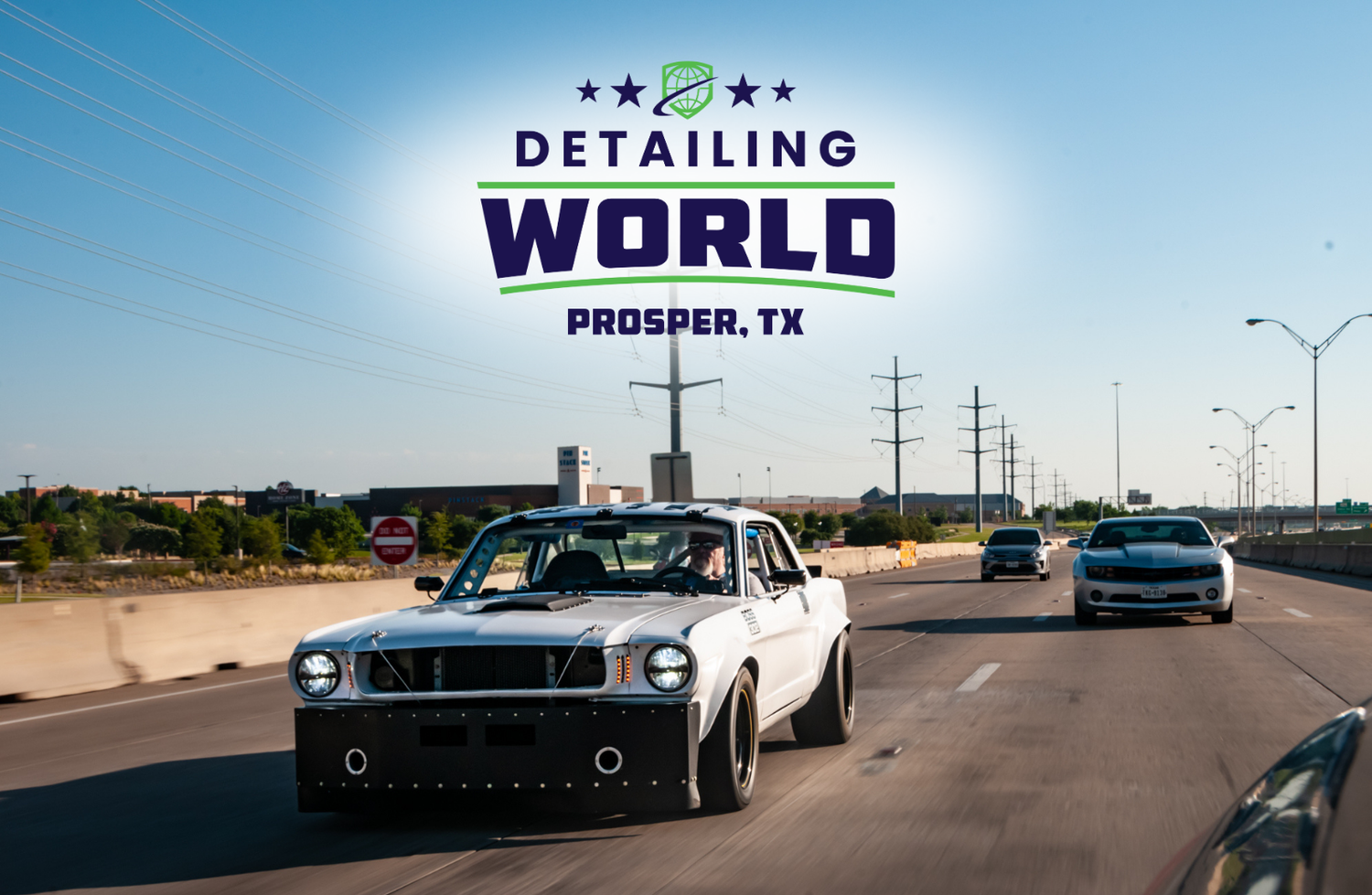
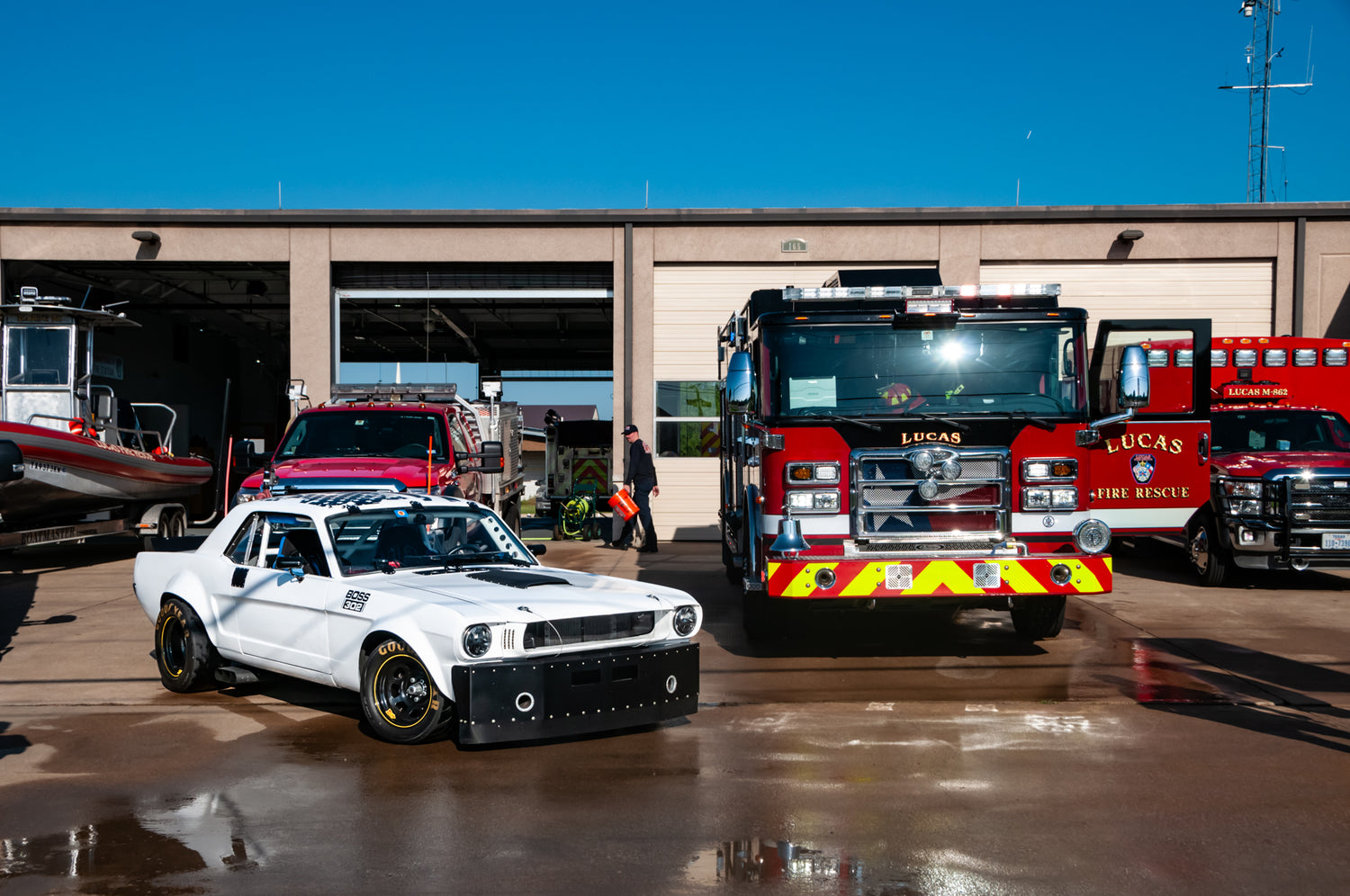


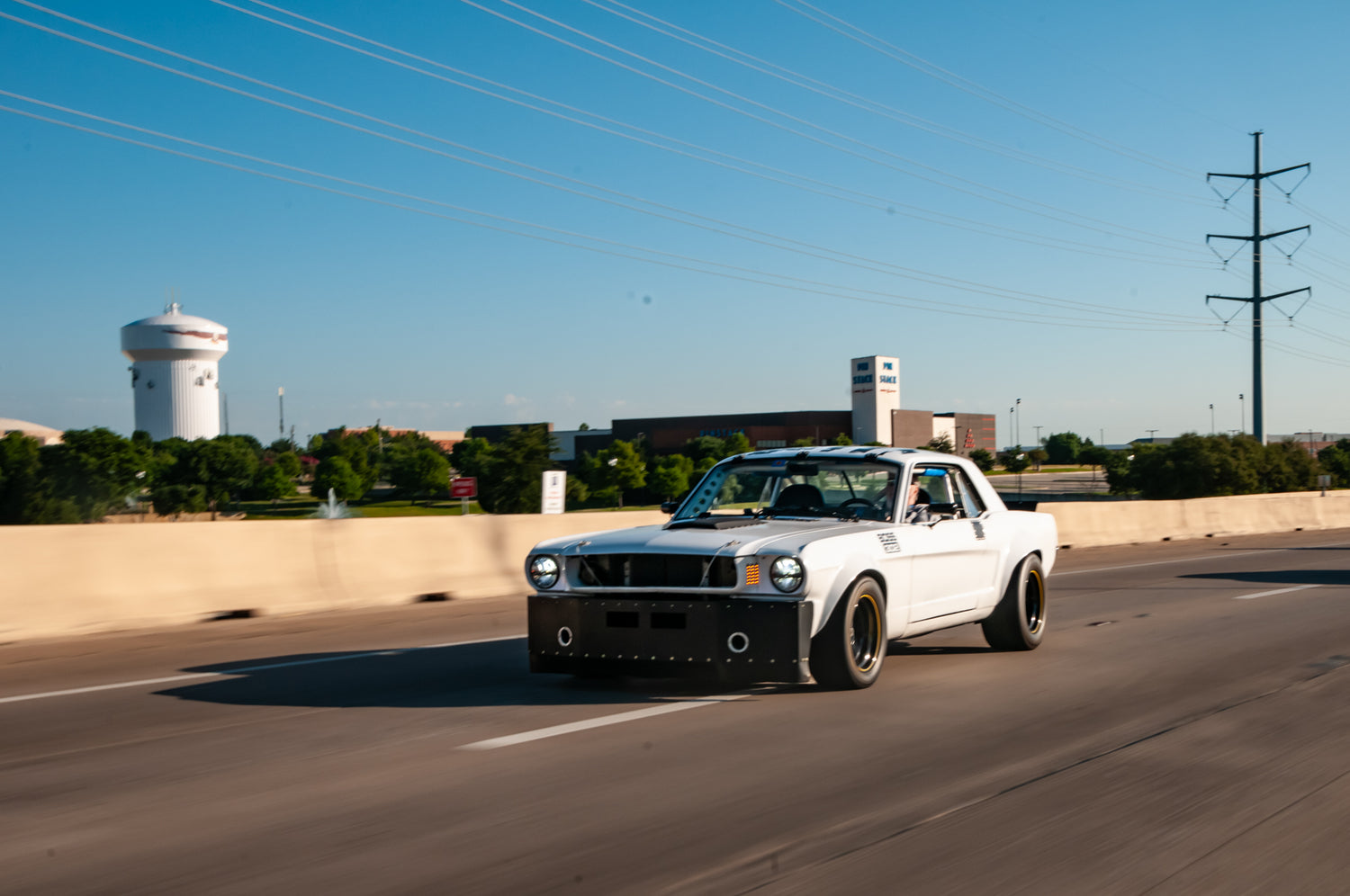

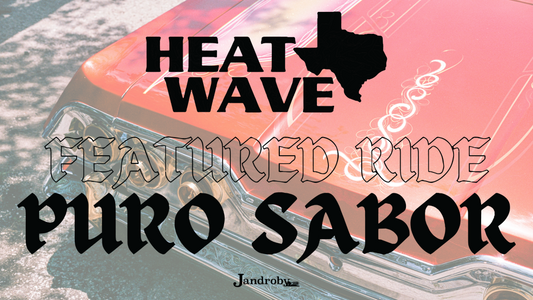
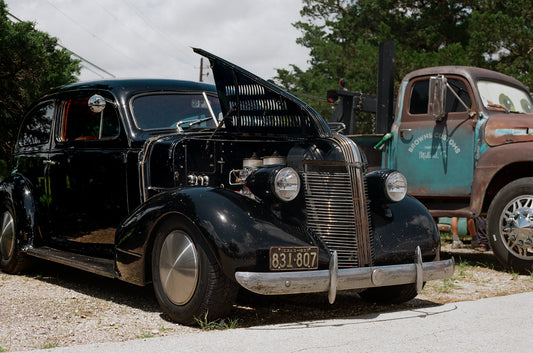
1 comment
Great story, you and Pete did a great job.